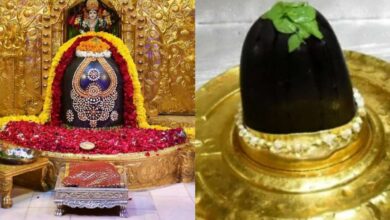Crucial Advice for Discovering Konark’s Seaside Charms and Cultural Riches
Things to Consider Before Traveling to Konark
Konark, surrounded by the glistening blue Bay of Bengal on one side and shrouded in historical mystery on the other, entices visitors with an amazing treasure trove that includes stunning temples, vibrant creative traditions, mouthwatering seafood on the shore, and much more! Here is a useful guide to help you organize your journey to see this seaside gateway that protects almost a millennium’s worth of cultural riches.

Sun Temple’s architectural grandeur
Konark is most known for its Sun Temple from the 13th century, which was designed as an enormous chariot for the Sun God Surya. It was decorated with elaborate statues that honored the might of this colorful solar god who sustains the earth, and it had enormous stone wheels driven by horse sculptures.
It’s easy to feel completely dwarfed standing in front of the towering sanctum, which is decorated with twelve pairs of enormous wheels that are intricately carved with geometric patterns and symbols that represent the passage of time that the Sun enables each dawn, as you pass through the temple’s ruined gateway and watch the imposing entrance frame come into view.
Admire the plethora of dancers from heaven that surround the walls, as well as the images of royal processions and rituals that symbolize the might, dignity, and divinity of the Rajaraja, who oversaw the building of the vast temple. Elephant sculptures are shown on the top terraces, where they may have formerly held up a massive shikhara tower.
Konark’s Sun Temple is a magnificent tribute to the cosmic Lord that has withstood more than three centuries of coastal weather! The back exit leads to the Chandrabaga beach, and guides tell fascinating folklore about the temple’s magnetic architecture that once led ships astray or rival constructions to collapse!
Awarded the 1984 AD UNESCO World Heritage Site status, it faces eastward to welcome the first rays of dawn as they flood over the Bay of Bengal.
Illustrations influenced by Suraya Siddhanta 2, an astrological treatise from the 12th century.Living Customs: Odissi Dancing
The temple also has strong ties to the lyrical temple dance style known as Odissi, which was created within holy spaces via the symbolic coordinated expressions of ancient devadasis who invoked heavenly favor with gestures, glances, and postures that mirrored shapes seen in sacred architecture.
The Odissi Dance
The characteristic body position of tribhangi, which represents three deflected curves, is reminiscent of the stances used by goddess statuettes seen in little pavilions at temples. This evocative traditional Indian dance, which has been revived to worldwide acclaim over the last century, features heavenly nymphs frozen mid-dance atop the temple walls, shown via flowing choreographic repertory adapted from sculptural friezes.
See live performances at the nearby Konark Natya Mandap, which was constructed specifically to serve as a stage for yearly dance festivals and became so well-known that it inspired the creation of the Konark Dance Village, which offers professional instruction by renowned Odissi gurus. The Odissi ghungroo’s rhythms now reverberate far and wide, symbolizing graceful temple dance everywhere!
3. Wealthy Archaeological Heritage
The Sun Temple is surrounded by the ruins of many smaller shrines dedicated to other Hindu deities, which provide further insights into the centuries-long Kalingan temple architecture:
Constructed a few decades before to the main structure, the Mayadevi Temple was devoted to Lord Surya’s spouse and included intricately carved pillars adorned with religious images. Smaller shrines known as Mukhasala, which catered to priests affiliated with the former royal temple, are dotted around.
A vast array of sculptural panels and antiquities that were excavated from the complex and display a variety of religious iconography and spiritual scenes, as well as glimpses into regal lifestyles through warrior hunting friezes, royal processions, and courtly dances, are housed in the Archeological Museum at Konark. Make time to investigate the meaning behind recurring themes in various artifacts.
Further south, close to Kuruma hamlet, are the remains of the Goddess Bhagwati Temple, which is revered locally as a Shakti Peetha temple because the restored torso symbol shows elements of the Kalinga style mixed with Bhauma traits.
4. Gourmet Treats by the Sea
After seeing the temples, treat your hungry palate to Konark’s delectable cuisine, which combines local foods and fresh fish with flavorful regional spices for mouthwatering culinary discoveries:
Start the day with the Odisha-native, creamy Chhena Ghuguni breakfast or one of the delectable Pithas in a variety of fruity and sweet yogurt flavors. Try the famed restaurant Nimpura’s Mahura fish curry, which consists of delicious Rohu fish chunks cooked in a flavorful sauce. Try the aromatic mutton pepper kalia for supper or the fragrant, homemade Chenna Poda cheesecake prepared with soft cottage cheese.
Gourmet Treats
Favorite dishes in the area include panipuri, gupchup, and chaat counters, which serve up bursts of sour, sweet, and spicy flavors in crunchy shells. Don’t miss the delectable, rich kheers made from rice, coconut, or sago pearls that are guaranteed to please your palette, or the famous sweetened rasagollas, which are fluffy cheese balls flavored with cardamom and saffron!
5. Folk art – appliqué crafts
Ancient motifs and patterns reinterpreted through tapestries, wall hangings, and other items brought this unique heritage artform back from the verge of extinction in the 1970s thanks to the meticulous efforts of a trailblazing 20-member women’s craft collective. Konark applique work is a treasured handicraft with roots in 13th-century temple parasol decorations.
Traditional Handicrafts
These days, the Puri and Konark districts are known for their vibrantly colored textile patterns, which are bordered by fine stitching in contrasting tones and often include decorative images of deities, flowery creepers, geometric forms, or aquatic animals. Admire their skill in bringing vivid country handicrafts to life, bringing the temple paintings to life.
6. Convenience of Travel
Konark has extensive air, rail, and road transportation networks.
With an airport rail service, Bhubaneswar, the closest airport, is just 35 km away. For journeys to Konark, taxis and buses are readily accessible outside the terminal.
Trains running overnight link Bhubaneswar (two hours) to major cities like as Bangalore, Chennai, and Kolkata. For access to the temple, Konark has its own train station or alight at Puri.
The route is often served by buses, including premium models. Travel the NH203 Highway, which skirts the picturesque coastline. Cycles and autorickshaws are practical for short excursions, but they should make landmarks clear.
Konark wonderfully captures the intricate details of Indian culture, from its revered Sun temple by the sea to its intriguing performing arts, which are nourished in its spiritual fabric. Get lost in the rhythms of Konark’s coastal history, and you will undoubtedly discover exquisite truths that are just waiting to be incorporated into your innermost being.







